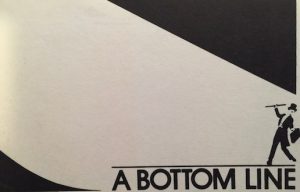My CEO and I were arguing as we drove north along Lake Shore Drive in Chicago. He was concerned that I was too focused on insight at the expense of execution. As he put it “95% of the people in organizations are just pulling on the oars, they don’t need insight.†My response was to ask where did sails come from if everyone was pulling on the oars?
New ideas are scary things to most organizations and to most executives. Managers like order. For all that we praise entrepreneurs in today’s world, we get very uncomfortable when too many ideas are floating about. Most of us are, in fact, pretty comfortable pulling on the oars as long as someone is pointing towards something that looks like a worthy destination. We all point and laugh at the person playing with tying a sheet to an old oar to see what happens. Until the oar turns into a mast and everyone wants one of their own (or says it was obvious all along).
The people who want to play with things to see what might happen are a source of constant anxiety for those who favor order. They are also the source of great rewards. Managing the balance between risk and reward has vexed those in charge for as long as there have been people in charge.
In a slow-changing world, you can manage this problem by carefully limiting and constraining those who like to play with things. Create an R&D lab and wall it off from the day-to-day operations of the business. Set up a new business development group or an innovation lab. Call it what you want. Just keep the crazies under control and out of the control room.
We don’t live in a slow-changing world. We all have to learn to live with a degree of craziness and take ownership of some level of control. There’s no way to simply pull on the oars and let someone else worry about how to steer.

 “We need you back in the office now, Anthony’s team just got fired.â€
“We need you back in the office now, Anthony’s team just got fired.â€